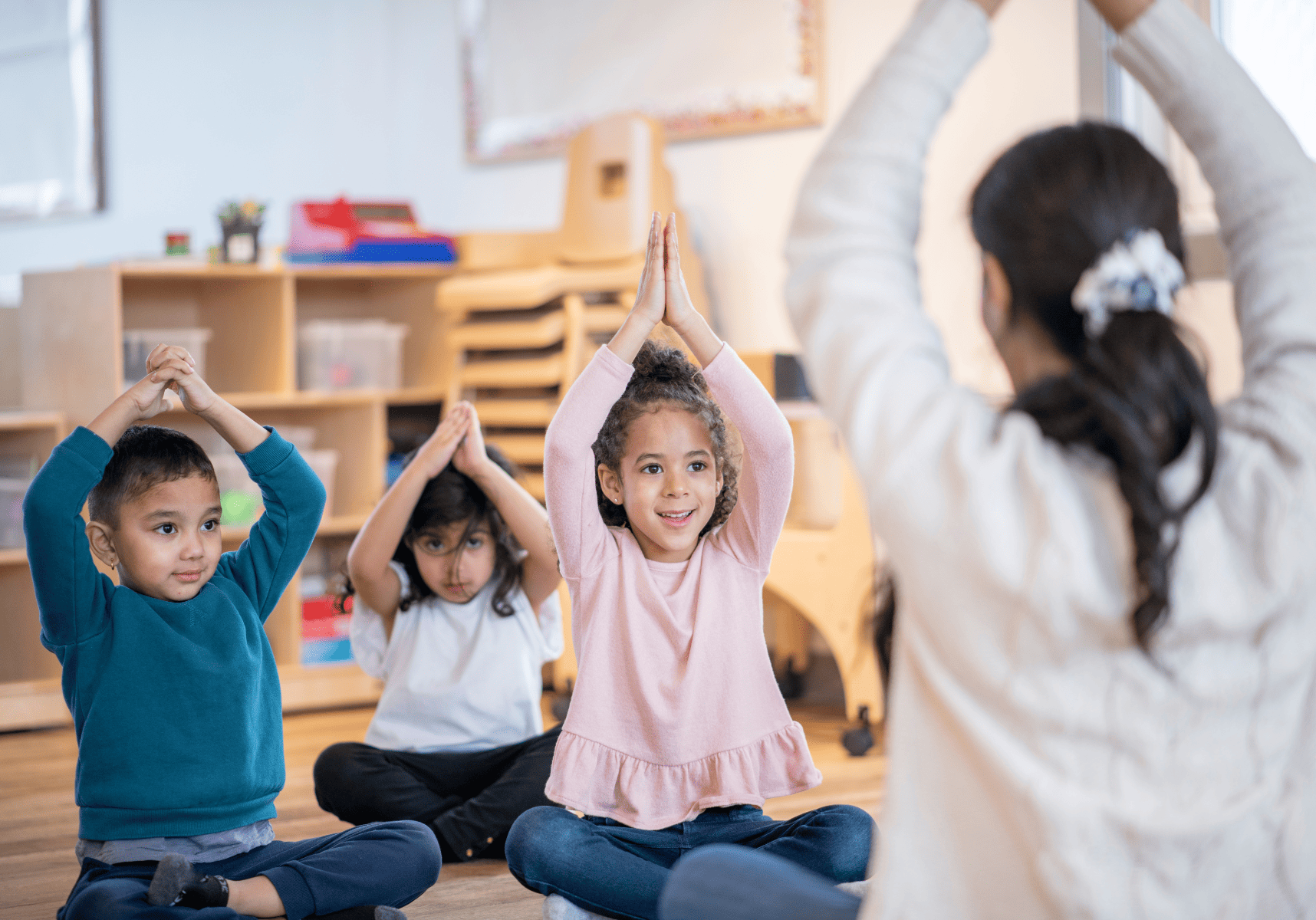
Exploring the Experience of Children’s Yoga
Exploring the Experience of Children’s Yoga from the Practitioner's Perspective: An Interpretive Phenomenological Analysis - By Joanne Owens
Reading time: 4 minutes
When the topic of yoga for adults is discussed, yoga classes in neighbourhood community centres or athletic facilities is generally mentioned. Together with additional resources for home yoga practise, like yoga mats, music, YouTube videos, and even yoga literature. There is, however, very little mentioned regarding yoga practises available for children. If adults are aware of the many benefits yoga offers their bodies and minds, then children, if they are not already, should have access to yoga for their bodies and minds to become strong from an early age. In the words of Frederick Douglass (1855) cited by Mapp & Gabel (2019) ‘It’s easier to build strong children than to repair broken men’. Yet, this is perhaps not the case; although children's mental health is gaining importance, this beneficial approach does not seem to be applied to help address some of this worry. It may well be for several reasons, one of which is that most research on children's yoga has been done abroad, most commonly in either Canada or the United States. It's also possible that many studies have focused on the child's perspective, inferring that these studies have not received the consideration it perhaps should have.
The lack of children’s yoga from the experience of recognized professional, may be a reason gatekeeper’s such as schools and local governments are not aware of the many benefits that children’s yoga offers. The wealth of knowledge that children yoga practitioners possess, could be used to convince gatekeepers like teachers, parents and local governments of the benefits of yoga practice for children. As a result, they do not consider it a priority or allocate funding. Thanks to the practitioner's contribution, it is hoped that this alternative strategy for addressing children's mental health, which has not received much support, will be more generally adopted and become a process of prevention rather than cure. Schwind et al., (2017) cited by Wolff & Stapp, (2019), state that American early childhood settings are increasingly considering yoga for their young students. By finding out how yoga practitioners perceive children’s yoga, it will hopefully enable these practitioners to be heard. It is hoped that this research will contribute to the body of evidence previously amassed about how yoga may foster young people's personal development, have a beneficial impact on their future, and highlight the importance of children's yoga to young people's mental health. With children’s mental health becoming an ever-increasing priority for their custodians, hopefully this research will elucidate the role that yoga can play.
The method "An Interpretative Phenomenological Analysis" was chosen because it is a methodology that strives to provide in-depth analyses of personal lived experiences, which would suit the enquiry of this research. The first theme established that Children Discovering Yoga is a three-part concept that has come together to form a coherent whole. According to the participants' experiences, yoga for children has various benefits, these benefits can help children for life and children should be considered all at the same level.
This theme frequently adds to the body of prior research and highlights the benefits of children’s yoga even more. Each participant’s remarks reflect the findings of several earlier studies that have been cited as well as findings from other categories of research.
All participants discuss in length connectiveness – relationships, internalization of yoga skills, co-operation, noncompetitive nature, bodily advantages, social, emotional, physical, cognitive benefits, along with adaptability, having fun and transferable skills. They discuss the importance of breathing, movement, starting yoga at a young age, not being perfect, children of any gender, age, or ability can do yoga, self-regulation, and self-awareness. These benefits are in line with the findings of the alternative research studies, which also highlight self-regulation, future adult wellbeing, breathing, social skills, relaxation, and mindfulness. The participants specifically mention learning compassion, kindness, having fun, being loud, being quiet, being boisterous.
‘I think that if we are privileged enough to be in that position where we’re teaching children and then lucky enough to be teaching children’s yoga. Like it’s just it it. It feels to me such an important job’
The second theme shows that this theme reflects the participants perceived experience of their own personal Connecting with Yoga. It has emphasized the relationship between the perspectives of each participant and the significance of children's yoga. Even though this theme is not portrayed or mentioned in any previous literature, the benefits due to the participants' connection to yoga are still reflected in earlier studies. The theme also looks at how each participant’s path to teaching children’s yoga and their connection to the practise have influenced how they teach and practise yoga to young students.
The third theme reflects on the participants perceived experience of Yoga as an Alternative. This is a two-part concept, the participants strongly believe that children's yoga should be an Alternative to Academia, and they also think that opinions and perceptions of children’s yoga need to change Wacky Alternative.
The Third Theme all three participants perceive children’s yoga to be an addition to academia, Participant 1 believes ‘kindness…compassion’ should be offered alongside academic subjects, Participant 2 ‘empowerment,’ Participant 3 ‘cope with their emotions,’ they consider these just as important as school curriculum activities. They believe that teaching each child these life skills may be achieved through children's yoga, but that this is not being done in schools as successfully as it could be.
The concept of children’s yoga however, according to participants, has not always been well-received. They discuss how people’s conceptions of children’s yoga frequently diverge from what is the case. Participant 3 discusses the potential for misidentification of yoga as a religion by some individuals. Participant 2 gives an example of a professional encounter to illustrate how someone’s perspective could change positively after experiencing children’s yoga firsthand. Participant 2 also states that in the world of yoga, people are trying to put in place ‘Certain training and it has to be by certain companies.’ The fear here is that much of children’s yoga is based upon will be lost.
The key findings from the research demonstrate that children’s yoga has numerous benefits for children’s general development that go beyond what is taught in school. These benefits can support children throughout their youth, into adulthood, and possibly for the rest of their lives. Additionally, it teaches children that everyone is on an equal playing field regardless of their gender, ability, or age; the only person they should be competing with is themselves. The analysis goes on to demonstrate how the practitioners themselves identified with children’s yoga due to their understanding of children, its simplicity and adaptability. Their own possible adverse childhood experiences in the school system, has given them a unique perspective that has drawn them to yoga due to its therapeutic nature. They now hold the opinion that teaching yoga to children will help young people lay positive groundwork for their own life pathways, hopefully early in life. Finally, the analysis showed that, in the participants’ perspective, children’s yoga can complement academic endeavours. For those who are not academic, children’s yoga can nevertheless serve to illustrate how each child is bright in their own unique way. Unfortunately, it also demonstrated that people’s opinions of children’s yoga are based on lack of knowledge or a distorted perspective.
*All participants are kept anonymous





